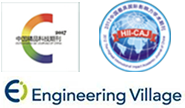Abstract:
Carbon fiber composites are widely used in aerospace and automotive industries due to the characteris-tics of low density, high elasticity, and better toughness. Due to the complexity and instability of the manufacturing process of carbon fiber composites and their vulnerability to environmental impact during service, it is likely to generate delamination, porosity, fiber wrinkle, and other types of damage. In this paper, the principles and characteristics of C-scan, phased array, air-coupled, optical fiber-ultrasound, and laser-ultrasonic testing based on body or guided waves, as well as the research status of these technologies for damage detection of carbon fiber compo-sites, are introduced respectively. The most representative imaging algorithms for damage diagnosis are shown, including total-focus imaging, 3D visualization imaging, tomography, reverse time migration imaging, and probability imaging method, these imaging methods can effectively realize various types of damage morphology in carbon fiber composites. The prospect is made from the following aspects: The establishment of an array acoustic field model of carbon fiber composite laminates, the optimization of damage imaging method, the construction of intelligent/efficient/real-time structural health monitoring imaging system, the establishment of damage quantitative evaluation criteria, and combination of machine learning and digital twin technology for damage diagnosis assessment and life prediction.


 下载:
下载: